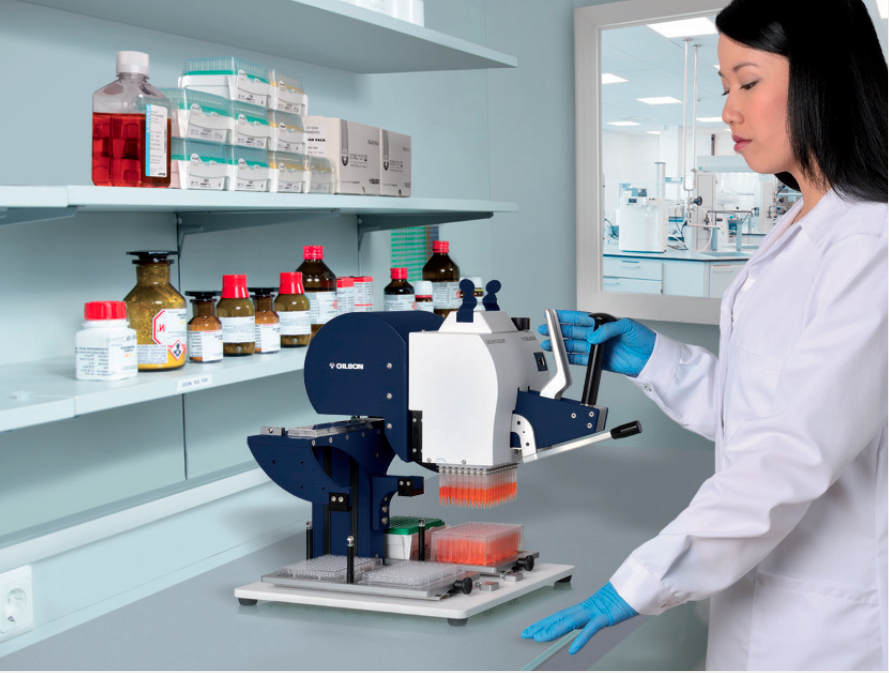For today’s fast-paced laboratories, there is a need to operate at a fever pitch, adopting a combination of both low- and highthroughput assays to keep up with the demand – whether an enthusiastic PI, a grant deadline, or the race to publish first.

Although the versatility and flexibility of manual pipettes make them a ubiquitous fixture in life science laboratories, automating liquid handling is the key to success in more involved workflows.
Whilst it is possible to use the manual pipette to meet the needs of complex or medium and high throughput experimental designs, this requires a lot of repetitive movements, resulting in decreasing accuracy over time. Fatigue and repetitive motion injury can compound consistency issues and variation in user operation and procedural errors can lead to poor data quality and reproducibility.
Fortunately advances in technology, such as the new Gilson’s Connect range of smart, Bluetooth®-enabled pipettes and devices greatly enhance traceability and efficiency. However, complex workflows that require a lot of liquid handling can be extremely time consuming, compelling researchers to focus on repetitive tasks when their valuable time would be better used in the facets of science that cannot be automated.
For higher throughput experimental applications such as bulk reagent dispensing and plate to plate replications, protocols are often time critical and repetitive operations can be intensive. Whilst full automated, robotic systems can be deemed too costly and overkill for such workflows, manual hand held pipetting can be very challenging. An ideal solution that addresses this balance is a semi-automated approach. Gilson’s 96-channel benchtop system, PLATEMASTER® not only offers superior accuracy and reproducibility; its timesaving benefits make it a very cost effective solution for pipetting 96- and 384-well plates.
Full automation is best suited for routine and repetitive work however large automated workstations can be cumbersome, inflexible, expensive, and used only for large-scale or expensive projects, therefore, entry-level automation has become a popular option.
Gilson’s automated pipetting system uses their legendary PIPETMAN® technology and, unlike traditional automation platforms, is compact enough to easily fit into any lab. PIPETMAX® is an open, versatile system customisable to fit the needs of the assay, and is configurable to run any reagent, kit, or protocol. Easy to use and affordable, it protects important samples from procedural errors, increases reproducibility, and frees up time devoted to tedious pipetting jobs that can be better spent improving lab productivity. PIPETMAX® is an ideal, entry-level automation system.
Adopting a simple, customizable, and flexible automated system for routine and repetitive tasks promotes accuracy, efficiency, and reproducibility. Robust enough to process many samples through complex steps, a good automation platform also allows for reasonable modifications in the protocol and scale of the workflow.
The goal of science is discovery. Gilson’s PIPETMAX® improves the quantity and quality of data allowing scientists to take their minds off repetitive tasks and apply their minds to pursuing discovery. Simplification of complex and repetitive workflows enhances data reproducibility, increases the chances of discovery, and deepens scientific insight.
For more information, visit www.gilson.com
